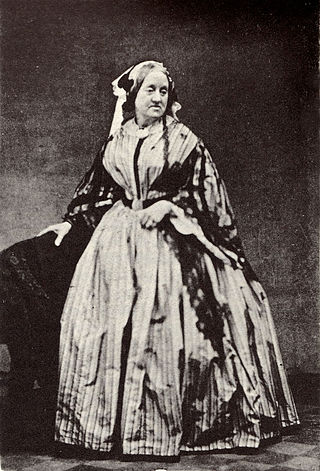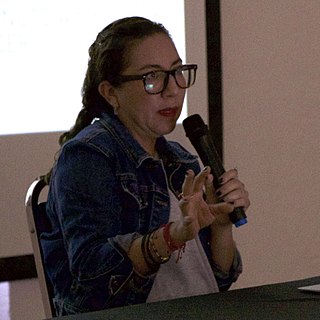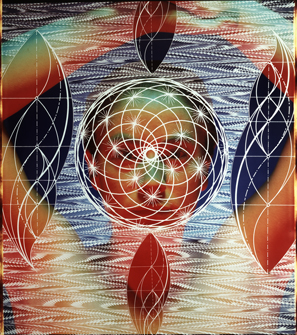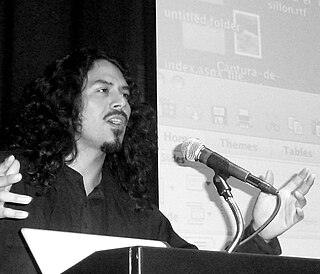Livia Corona Benjamin (born 1975) is a Mexican artist that centers her work on the relationship of human experience and the man-made. Her recent work is artisanal but combines multi genre practice of the developing world and new innovations. [1]
Livia Corona Benjamin (born 1975) is a Mexican artist that centers her work on the relationship of human experience and the man-made. Her recent work is artisanal but combines multi genre practice of the developing world and new innovations. [1]
Corona Benjamin was born in Ensenada, Mexico and now works in both Mexico and the United States. She attended The Art Center in Pasadena, California where she received her Bachelor of Fine Arts. In 2009, she received the Guggenheim Fellowship award for her project Two Million Homes for Mexico. Furthermore, she was a recipient for SNCA Endowment for the Arts Fellowship, along with being a nominee for the Prix Pictet in 2013. In her recent work Nobody Knows, Nobody Knew , she explores social economic history and political symbolism that tackles the structures built in rural communities. This work consists mostly of photographs, painting and videos that uncover these grain silos that damage rural Mexico. Most of her projects unveil the disuse of these silos and mass migration from rural Mexico to the United States. [2]
Livia Corona Benjamin has had success with her artwork, as she has been in many exhibits. Her work has been seen worldwide which include LACMA, Los Angeles, New Museum of Contemporary Art, New York City, Mexico City, Spain and many more international exhibits. These works can be found in a collections of the Museo de Art Carrillo Gil, the Portland Museum of Art, William Benton Museum of Art, along with many other private collections. Benjamin's work expands to monographs, books, and catalogues. [1]
Pacha, Llaqta, Wasichay: Indigenous Space, Modern Architecture, New Art discusses indigenous artwork that contains to Indigenous American ideas about their built environment and natural world. The title of the artwork are in Quechua, which is the language spoken by many Indigenous Americans. Each of the three words in the title hold a true significant value. For instance, Pacha means “denotes universe, time, space, nature, or world”. Llaqta values “place, country, community, or town”. Lastly, Wasichay means “building or constructing a house”. All of these meaning are influenced within the artwork that explore means of Indigenous groups from Mexico and South America. These include: Aymara, Maya, Aztec, and Taino. Although this work consists of various artists, Livia Corona Benjamin inputs her notion of complex relations amongst construction, land, and space that are indigenous in the Americas. [4]
Nadie Sabe, Nadie Supo is Benjamin's first solo exhibit that is primarily composed of two parts of photograms and a video. These two parts are separate but ultimately combine with Benjamin's project of exploring the silos in her native Mexico, which are built by the government. For instance the photograms aspect relates to Benjamin's project entitled, Infinite Rewrite. This project features images composed of granulated particles that create an illusion. Individually, each images establishes an equilibrium, that is replaced by the next image. These photograms play a role of photography during a time of digital reception and automation. [5]
Manhattan Transfer is presented in photography and sculpture, is Benjamin's first solo show in New York. This piece draws the ideal of Manhattan being the center for artistic achievements. The artwork includes a series of sculptures and unique photographs that pairs American idioms of culture with the trade goods of colonization along with cultural commodities. [6]
Previous/Next uses her fond interests of silos by taking photographs of abandoned grain solos that are throughout Mexico. Using these images, she is able appropriate the characteristics of her interests in silos in order to investigate of making and viewing images. Ultimately, Benjamin's goal is to discover the architectural process of salvage, deconstruction, and reuse. [7]
The Week In Pictures consists of C-prints which are silhouetted shapes against a different colored background. Overlapping, these create echoing contours of white negative space. These images appear to be abstract, but each are sketches drawn from Benjamin by the process of abstraction. By this method, she is able to rebuild her own scheme and offer and new transformed picture. [8]
The Road Was Paved With Silver is a socio-political artwork that explores Mexico's artisanal tourist trade. It further elaborates on the country's history as well as the global market in economic instability and political violence. The piece all use a silver material that helps "read" the piece, as the country's conflicting histories with these materials. Furthermore, Benjamin considers Mexico's booming silver tradition. As a result, Benjamin works to distance toward the flow of industrial world trade, while reflecting upon the individual and their works as they become embodied into the pressure of mass production. [9]

A photogram is a photographic image made without a camera by placing objects directly onto the surface of a light-sensitive material such as photographic paper and then exposing it to light.

Anna Atkins was an English botanist and photographer. She is often considered the first person to publish a book illustrated with photographic images. Some sources say that she was the first woman to create a photograph.

Graciela Iturbide is a Mexican photographer. Her work has been exhibited internationally, and is included in many major museum collections such as the San Francisco Museum of Modern Art and The J. Paul Getty Museum.
Susan Derges is a British photographic artist living and working in Devon. She specialises in camera-less photographic processes, most often working with natural landscapes. She has exhibited extensively in Europe, America and Japan and her works are in several important museum collections.
A luminogram is an image, usually made with an artistic purpose, created by exposure of photosensitive materials to light without the intervention of an object,
The Prix Pictet is an international award in photography. It was founded in 2008 by the Geneva-based Pictet Group with the mandate to use the power of photography to communicate messages about sustainability to a global audience. Its goal is to uncover photography of the highest order, applied to current social and environmental challenges. The prize is judged by an independent jury and carries a prize of CHF 100,000. The co-founders of the Prix Pictet were Stephen Barber, along with three independent consultants and advisers brought together by Barber - Leo Johnson, the sustainability expert; Professor Francis Hodgson, photography critic and academic; and Michael Benson, founder of the art consultancy Candlestar.

Dulce Pinzón is a Mexican artist currently living in Brooklyn, New York, Mexico City, Mexico, and Montreal, Canada. In 2015 she was named by Forbes Magazine as "One of the 50 most creative Mexicans in the world", and Vogue magazine identified her as one of the "8 Mexican female photographers who are breaking through at a global level." In 2020, the Voice of America characterized her as having "earned a prestigious place in the world of fine arts photography."

Photography by indigenous peoples of the Americas is an art form that began in the late 19th century and has expanded in the 21st century, including digital photography, underwater photography, and a wide range of alternative processes. Indigenous peoples of the Americas have used photography as a means of expressing their lives and communities from their own perspectives. Native photography stands in contrast to the ubiquitous photography of indigenous peoples by non-natives, which has often been criticized as being staged, exoticized, and romanticized.
Ina Jang is a photographer based out of Brooklyn, New York. She received her BFA in photography in 2010 from the School of the Visual Arts in New York City. In 2012, she completed the school's MPS program in fashion photography. Ina Jang is represented by Foley Gallery.

Catharine Weed Barnes was an early American photographer who later lived in England. She was a strong supporter of women photographers.

Janelle Lynch is an American artist whose images reveal an inquiry into themes of connection, presence, and transcendence. She uses an 8x10-inch view camera. While she photographed exclusively in the landscape for the first two decades of her career, Lynch's practice has expanded to include portraiture, still life, and cyanotype.
Ilit Azoulay is an Israeli artist of Moroccan origins based in Berlin.
Wayne Quilliam is an Aboriginal Australian photographic artist, curator, and cultural adviser based in Melbourne. He specializes in portraits and landscapes.

Anita Douthat is an American photographer.

Odette England is an Australian-British photographer whose artwork has been exhibited internationally. She often uses family photographs in her practice.

Ellen Carey is an American artist known for conceptual photography exploring non-traditional approaches involving process, exposure, and paper. Her work has ranged from painted and multiple-exposure, Polaroid 20 x 24, Neo-Geo self-portraits beginning in the late 1970s to cameraless, abstract photograms and minimal Polaroid images from the 1990s onward, which critics often compare to color-field painting. Carey's sixty one-person exhibitions have been presented at museums, such as the Amon Carter Museum of American Art, International Center of Photography (ICP) and Wadsworth Atheneum Museum of Art, alternative spaces such as Hallwalls and Real Art Ways, and many commercial galleries. Her work is in numerous museum collections, including those of the Metropolitan Museum of Art, Whitney Museum of American Art, Los Angeles County Museum of Art, Centre Pompidou, and Smithsonian American Art Museum. In 2019, she was named one of the Royal Photographic Society (London) "Hundred Heroines", recognizing leading women photographers worldwide. Los Angeles Times critic Leah Ollman describes her photography as "inventive, physically involving, process-oriented work" and her recent photograms as "performative sculptures enacted in the gestational space of the darkroom" whose pure hues, shadows and color shifts deliver "optical buzz and conceptual bang". New York Times critic William Zimmer wrote that her work "aspires to be nothing less than a reinvention, or at least a reconsideration, of the roots or the essence of photography." In addition to her art career, Carey has also been a longtime educator at the Hartford Art School and a writer and researcher on the history of photography.
Clarissa Tossin (born 1973) is a visual artist from Brazil and based in Los Angeles. Her collaborative, research-based practice develops alternative narratives found in the built environment, using elements of installation, sculpture, and moving image to explore intersections of place, history, and aesthetics.

William Cordova is a contemporary cultural practitioner and interdisciplinary artist currently residing between Lima, Peru; North Miami Beach, Florida; and New York.
Guadalupe Maravilla, formerly known as Irvin Morazan, is a transdisciplinary visual artist, choreographer, and healer. At the age of eight, Maravilla was part of the first wave of unaccompanied, undocumented children to arrive at the United States border in the 1980s as a result of the Salvadoran Civil War. In 2016, Maravilla became a U.S. citizen and adopted the name Guadalupe Maravilla in solidarity with his undocumented father, who uses Maravilla as his last name. As an acknowledgment to his past, Maravilla grounds his practice in the historical and contemporary contexts belonging to undocumented communities and the cancer community. Maravilla's studio is located in Brooklyn, New York.
Alinka Echeverría is a Mexican-British visual anthropologist, artist, filmmaker, and broadcaster.